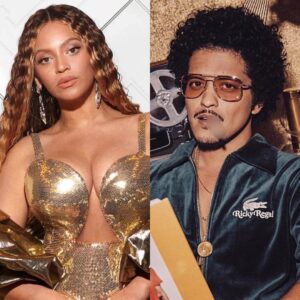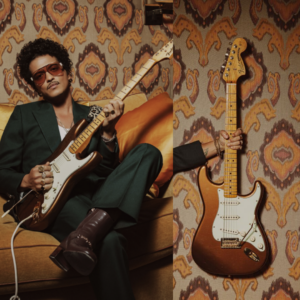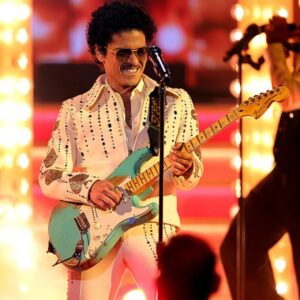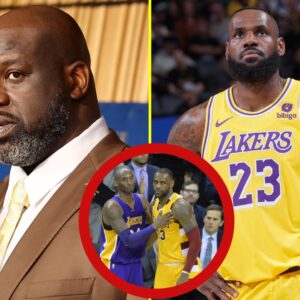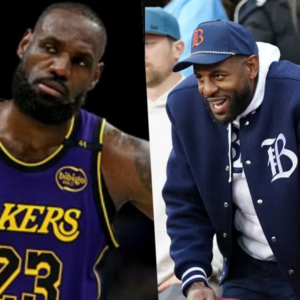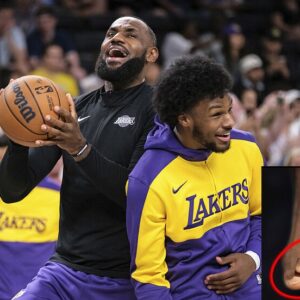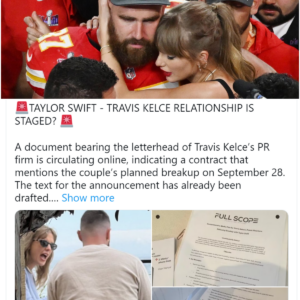Bruno Mars has become one of the most successful and beloved pop stars of the 21st century. With his soulful voice, slick dance moves, and undeniable charisma, Mars has topped charts, filled stadiums, and won Grammys. However, Mars’ path to stardom wasn’t always smooth. Through years of perseverance, musical exploration, and an uncanny ability to craft catchy songs, Mars transformed himself into a global phenomenon.

Mars’ Early Life Surrounded by Music
Born Peter Gene Hernandez in Honolulu, Hawaii in 1985, Mars grew up in a highly musical family. His mother was a singer and dancer, while his father was a Latin percussionist from Brooklyn. “I came out dancing,” Mars told 60 Minutes in 2012. “If you walked into my home, somebody was singing, somebody was dancing, somebody was playing an instrument.”
Surrounded by music from birth, Mars quickly developed his own talents. At age 4, he joined the family act The Love Notes, performing doo-wop songs for tourists’ luaus. By 10, a young Mars was impersonating Michael Jackson and Elvis Presley to rapturous applause. His uncle, a local Elvis impersonator, even hired Mars to perform as a young Presley. Mars soon mastered guitar and bass.
Despite his musical upbringing, Mars’ career path wasn’t clearly defined. He graduated high school and briefly enrolled in community college. Lacking direction, however, Mars soon dropped out to pursue a music career.
Early Musical Ventures
In 2004, Mars moved to Los Angeles to chase his dreams. His infectious energy and musical talent opened doors, scoring Mars backup singing and dancing gigs for major artists like Sean Kingston. However, Mars aspired to be center stage himself.
After a failed deal with Motown Records, Mars took matters into his own hands, developing his musical identity over several years. He joined production team The Smeezingtons as a songwriter, composing hits for artists like Flo Rida. Simultaneously, Mars recorded demos that mixed pop, rock, R&B, reggae and more, refusing to be boxed into one genre.
Mars’ diverse musical talents coalesced when he met producer Jeff Bhasker. Bhasker was struck by Mars’ preternatural ability to play various instruments, produce songs, and write catchy hooks. The two fast friends began recording tracks in Bhasker’s home studio. Mars synthesized his many musical influences into a style that was both familiar and fresh.
Big Break Success
Mars caught his first big break in 2009, co-writing Flo Rida’s hit song “Right Round.” The song topped charts internationally, announcing Mars as an up-and-coming songwriting talent. However, Mars still strived for success as a solo artist.
He got his chance in 2010 when famed producer Diplo introduced Mars to Atlantic Records. Atlantic A&R Aaron Bay-Schuck realized Mars had the star power, telling Billboard “I felt like I was meeting Michael Jackson or Prince.” Mars soon signed a solo deal.
That same year, Mars co-wrote and sang on B.o.B’s infectious hit “Nothin’ on You.” The track topped the Billboard Hot 100, providing Mars his first number one hit as a vocalist. When Travie McCoy released “Billionaire” featuring Mars months later, Mars’ soulful crooning and star presence were undeniable.
Mars’ solo career then skyrocketed. His debut album Doo-Wops and Hooligans dropped in October 2010, featuring smash singles like “Just the Way You Are” and “Grenade.” Mars’ heartfelt lyrics, soaring vocals, and hybrid sound enchanted listeners. By February 2011, Mars snatched his first Grammy for Best Male Pop Vocal Performance. Clearly, stardom had arrived.
However, Mars was only getting started.
Hitmaking Hot Streak
Fresh off his Grammy win, Mars began collaborating with broader talent pools to expand his artistry. He co-wrote songs for Alicia Keys, Flo Rida, and more pop and R&B stars. Simultaneously, Mars recorded his 2012 album Unorthodox Jukebox, implementing diverse influences like reggae, funk and rock.
The album spawned colossal hits like “Locked Out of Heaven” and “Treasure” that topped charts globally. Mars even scored his first Billboard Hot 100 number one as lead artist with “Heaven.” The album resonated with Mars’ growing fanbase, winning the Grammy for Best Pop Vocal Album. It was clear Mars had carved out a unique and winning musical niche.
However, Mars’ greatest success came in 2014 when he collaborated with producer Mark Ronson on the monster hit “Uptown Funk.” The irresistibly catchy, funk-infused track spent 14 weeks at number one, becoming the decade’s biggest single. It also exemplified Mars’ genre-bending artistry and vision to craft universally appealing hits.
Evolving Image
Alongside his musical evolution, Mars’ image has developed over his career. As a young artist, Mars had an edgier, rock-influenced look featuring a leather jacket, jeans, chains and pompadour hairstyle. However, as his music incorporated more funk, R&B and pop influences, Mars adopted a flashier, retro style.
By his second album, Mars was sporting bold colors, cropped pants and his soon-to-be signature pompadour. This look aligned with Unorthodox Jukebox’s diverse sound. It also facilitated Mars’ high-energy performances and dynamic stage persona modeled after legends like James Brown.
Mars’ style continued evolving subtly with his throwback-inspired 24K Magic phase. He fully adopted custom three-piece suits as his trademark, featuring bright colors, wide lapels and luxury materials like silk. These flashy suits complemented Mars’ braggadocious lyrics and funk instrumentation. The defining accessory also became Mars’ signature fedora, adding a stylish accent to his confident swagger.
Ultimately, Mars’ ever-changing, retro-tinged style has complemented his musical growth. His iconic suits and fedora are now instantly recognizable worldwide, reflecting his status as beloved pop royalty.
Crossover Dominance
By the mid 2010s, Mars was undeniably one of music’s most dominant forces. He had achieved crossover success spanning multiple radio formats thanks to his genre-blending artistry. Remarkably, Mars’ music appealed to diverse crowds internationally as well.
His third studio album 24K Magic continued displaying Mars’ versatility. Released in November 2016, the album explored funk, R&B, soul and disco themes. It became Mars’ highest-charting album ever, producing three number-one singles on the Billboard Hot 100. 24K Magic also won the coveted Grammy for Album of the Year, making Mars the first artist in history to have three five-times platinum singles from one album.
Clearly at the peak of his powers, Mars was ready to conquer one of music’s biggest stages: the Super Bowl Halftime Show. He was tapped to headline the Super Bowl LII halftime show in February 2018. Rather than play it safe, Mars dared a feat never before seen at a Halftime Show: the debut of brand new, unreleased music. He performed his new single “Finesse” live for the first time alongside rapper Cardi B, scoring yet another Hot 100 chart-topper out the gate.
The fearless performance epitomized Mars’ multifaceted musical talents. It also demonstrated his rare ability to dominate multiple spaces from radio to streaming to live performances. Simply put, Mars had solidified himself as the world’s biggest pop star.
Evolution into a Beloved Musical Force
Bruno Mars has achieved a peerless level of success in popular music. He boasts 11 Grammy Awards, over 130 million singles sold worldwide, and a $175 million net worth. However, Mars is more than just an entertainer – he has become a beloved musical force.
Critics laud Mars’ throwback style yet innovative sound. He continues expanding his musical range, exploring new genres with each album like R&B on his 2022 project An Evening with Silk Sonic. Mars has also used his platform for good. In 2017, he donated $1 million from his Michigan concert to aid Flint water crisis victims. The following year, Mars donated 24K Magic World Tour proceeds to Hawai’i Community Foundation’s efforts against homelessness.
Most importantly though, Mars makes fans happy. His concerts are described as joyful, inclusive celebrations that bridge generations. The unwavering public affection was crystallized when Brooklyn subway riders spontaneously danced together to “Uptown Funk.” In an increasingly fractured world, Mars’ feel-good music unites
News
Bruno Mars Abruptly Cancels Sold Out Concert In Israel After ‘Militant’ Group Launches Attack Killing More Than 200 Civilians
Bruno Mars Bruno Mars Abruptly Cancels Sold Out Concert In Israel After ‘Militant’ Group Launches Attack Killing More Than 200 Civilians War has broken out in Israel….
“Phenomenon” Bruno Mars caused a fever in the music industry after 4 years of absence
The male singer of famous hits in the international music industry, such as “Just the Way You Are”, “Grenade”, “The Lazy Song”, “Uptown Funk!”… has just reappeared….
Fans Question Bruno Mars about Where He Had Been after He Trolls Artists over Grammy Snubs
A few days after “Just the Way You Are” crooner dropped a witty Grammy-related post on social media, fans have begun asking him when he would release…
Nick Cannon thinks Bruno Mars has more hits than Beyoncé and Taylor Swift
Beyonce and Bruno Mars performed together at the Super Bowl 50 halftime show. Nick Cannon thinks Bruno Mars has more hit songs than Beyoncé and Taylor Swift….
FENDER HONORS GRAMMY-WINNING ARTIST, MULTI-INSTRUMENTALIST, SONGWRITER, AND PRODUCER BRUNO MARS WITH ARTIST SIGNATURE STRATOCASTER GUITAR
The Bruno Mars Stratocaster® Features the All New Mars Mocha Heirloom™ Finish, 1969 Vintage Stratocaster® Neck Shape and a Custom-Set of Bruno Mars Pickups that Personifies Mars’ Unique Style…
Bruno Mars Cancels Israel Show Amid Hamas Attack
Bruno Mars performs on December 02, 2016 in Los Angeles. B LACROIX/WIREIMAGE Bruno Mars’s sold-out concert in Tel Aviv on Saturday has been canceled, its promoters announced…
End of content
No more pages to load



